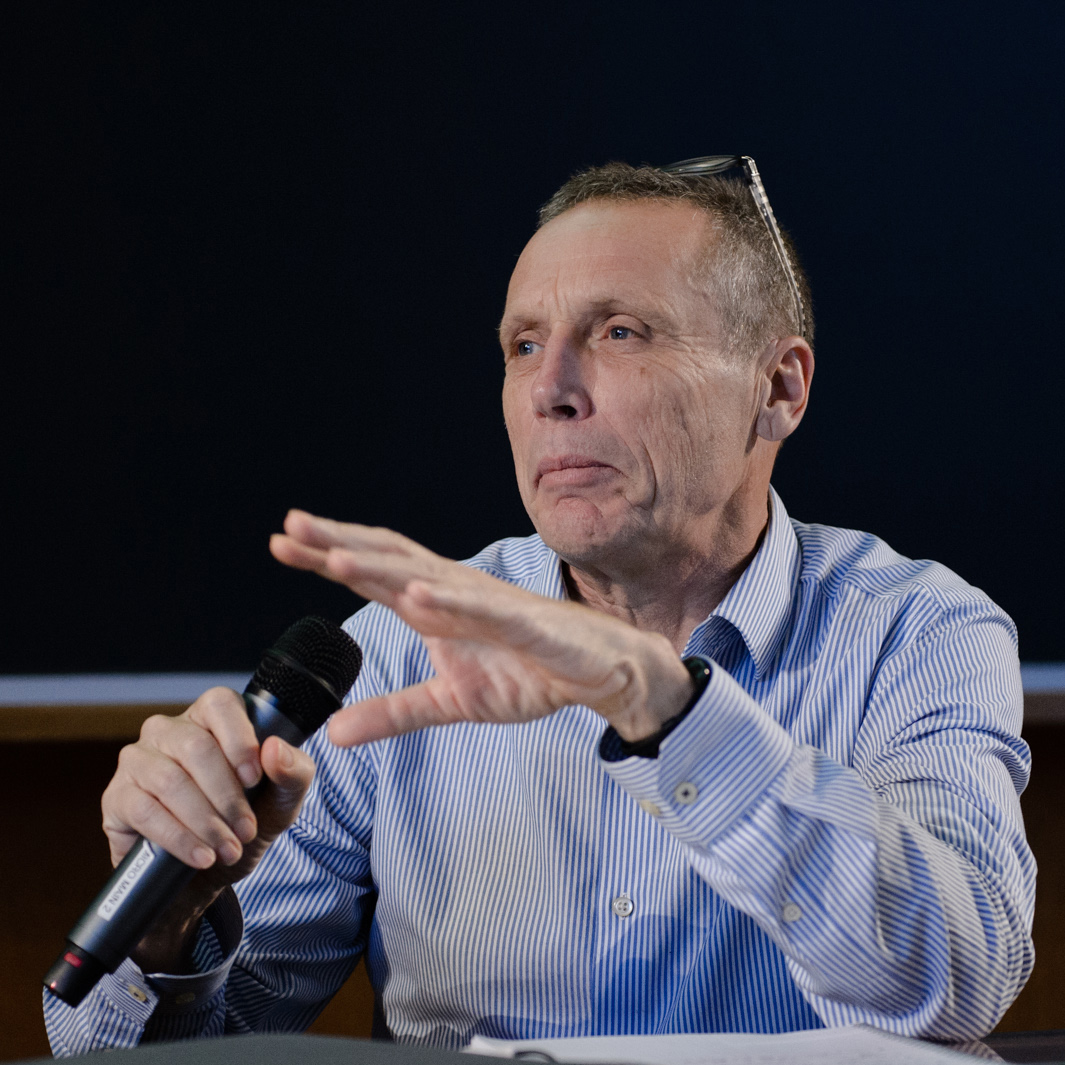TRIBUTE TO NICK KAISER
 Nick Kaiser, photographed at IAP in 2017.
Nick Kaiser, photographed at IAP in 2017.Credit: Jean Mouette /IAP-CNRS-SU
It is with great sadness that the members of the Institut d'astrophysique de Paris learnt about the passing of Nick Kaiser on June 15, an exceptional scientist and a friend.
His fundamental contributions to the field of theoretical cosmology have had a significant impact on the study of large-scale structures of the Universe and the development of observational cosmology at these scales. Nick was the originator of the idea of “bias” in his seminal 1984 paper, explaining the difference between the distribution of clusters of galaxies and that of dark matter. He was the “K” in “BBKS”, one of the most important papers in the theory of large-scale structures, elucidating the link between the initial distribution of the dark matter peaks and the observed velocity distribution of galaxies. His 1987 paper on the impact of distortions in redshift space on the observed distribution of galaxies is also seminal.
His and Gordon Squires's proposition to use image distortions caused by the weak gravitational lensing effect to deduct the distribution of underlying matter is the founder of a vibrant field, with the imminent launch of the Euclid satellite. These works laid the foundation for the theory of the Universe cosmic web.
Nick Kaiser's research was guided by a very deep physical insight. He identified the fundamental aspects of seemingly complicated phenomena to build simple models that focused on the core issues. For those who knew him personally or had the opportunity to meet him, his kindness, his boundless enthusiasm for scientific discussions, often provocative but always filled with humour, will remain in our memories.
On leave from the Institute of Astronomy at the University of Hawaii, he spent five months at the IAP in 2015. In 2017, he joined the Laboratoire de Physique de l’Ecole Normale Supérieure as a professor. He then contributed to the organization of the ICAP (Initiative for Cosmology and AstroParticle Physics) seminars at the IAP. During the various seminars that he attended, his interventions were enlightening and stimulating. Recently, many colleagues from the IAP and elsewhere had the pleasure and keen interest of listening to and interacting with him during the cosmicweb23 workshop from January to March 2023 at the Kavli Institute for Theoretical Physics (KITP) of the University of California, Santa Barbara.
Many people appreciated his vast knowledge and his discerning view of cosmology. He will be deeply missed.
Links
![]() University of Hawaii News: “In memoriam: Pan-STARRS pioneer, trailblazing astronomer Nick Kaiser”
University of Hawaii News: “In memoriam: Pan-STARRS pioneer, trailblazing astronomer Nick Kaiser”
![]() Blog “In the Dark”: “R.I.P. Nick Kaiser (1954-2023)”
Blog “In the Dark”: “R.I.P. Nick Kaiser (1954-2023)”
References
![]() Article in Astrophysical Journal: Kaiser, N., 1984, “On the spatial correlations of Abell clusters”
Article in Astrophysical Journal: Kaiser, N., 1984, “On the spatial correlations of Abell clusters”
![]() Article in Astrophysical Journal: Bardeen, J. M., Bond, J. R., Kaiser, N., Szalay, A. S., 1986, “The statistics of peaks of gaussian random fields”
Article in Astrophysical Journal: Bardeen, J. M., Bond, J. R., Kaiser, N., Szalay, A. S., 1986, “The statistics of peaks of gaussian random fields”
![]() Article in Monthly Notices of the Royal Astronomical Society: Kaiser, N., 1987, “Clustering in real space and in redshift space”
Article in Monthly Notices of the Royal Astronomical Society: Kaiser, N., 1987, “Clustering in real space and in redshift space”
![]() Article in Astrophysical Journal: Kaiser, N., Squires, G., 1993, “Mapping the dark matter with weak gravitational lensing”
Article in Astrophysical Journal: Kaiser, N., Squires, G., 1993, “Mapping the dark matter with weak gravitational lensing”
Web writing: Christophe Pichon, Valérie de Lapparent
Layout: Jean Mouette
June 2023
